GEM Report/Al Rawi Productions
The Education 2030 Framework for Action, which is the roadmap for achievement of Sustainable Development Goal (SDG) 4, highlights the crucial role of non-state actors in education (Box 2): ‘Country-led action will drive change; however, the ambitious education goal cannot be achieved by governments alone. They will need the support of all stakeholders, including non-state actors’ (UNESCO, 2015, §86).
Despite the understanding that fulfilling the right to education requires multiple stakeholders and that the role of non-state actors has increased over the past 30 years, non-state involvement in education generates passionate debate, particularly over two key concepts: the extent to which education is a public or private good, a form of investment or consumption; and how to interpret the right to education with respect to its implications for state and non-state actors’ responsibilities.
Governments take on the high cost of delivering education because of its public good qualities – in other words, the wider benefits to societies and economies. An educated workforce helps develop the economy, while public schools develop and strengthen a sense of national identity, superseding and absorbing traditional education structures managed by local communities and religious institutions. Without state provision, individuals might not invest as much in education, reducing societies’ potential.

But education also has strong private good qualities. Consuming more education improves an individual’s opportunities. Education is a vehicle for differentiation and advancement. Those who manage to climb the education ladder are better placed to improve their standard of living. As education systems cannot accommodate everybody on the higher rungs, families do everything they can to ensure that their offspring make it to the top.
Such competition generates demand, which in turn leads to supply of education goods and services. Depending on national context and disposition, markets may emerge in direct provision of education or in other services that confer advantage, such as supplementary tuition. Governments differ in the extent to which they provide sufficient financing for education – or, alternatively, facilitate provision of education goods and services by non-state actors – as a means of respecting, protecting and fulfilling the right to education.
This right encompasses both entitlements and freedoms. Individuals have a right to free and compulsory education, whose duration varies by country. But also recognized are individuals’ rights to establish schools and to choose the type of school they prefer for their children, in line with their religious and moral convictions, as long as these schools meet minimum government standards. Four principles have been associated with fulfilment of the right to education. There have to be enough schools with appropriate infrastructure, trained teachers, and teaching and learning materials; the schools have to be accessible to all, without discrimination or physical, technological or financial obstacles; curricula and teaching methods have to be acceptable, relevant, culturally appropriate and of good quality; and education has to be flexible and adaptable to changing societal and community needs (OHCHR, 1999).
Yet, if countries are responsible for meeting these principles, questions arise on how they should intervene. Should they provide, finance or regulate education? All of these? In what mix? At what point might such activities violate the right to education? While governments have a duty to respect, protect and fulfil their citizens’ right to education, a wide range of non-state actors with a variety of forms, arrangements and motivation, from charity to profit, play a significant role in many education systems. Their activities may or may not involve collaboration with the government. Should non-state actors’ participation in education be encouraged, contained or prevented? The answers, which may be specific to country context, education level and type of activity, have been explored in depth in the 2021/2 GEM Report.
Whether, in addition, non-state activity accelerates or slows down progress towards gender equality in education is also context-specific. Where government commitment to gender equality is lacking, some non-state actors are at the forefront of fighting discrimination in education on the basis of gender, sexual orientation, gender identity and gender expression. By contrast, in countries where governments actively promote gender equality, non-state actors may support social forces that instead try to preserve the status quo. For instance, governments may allow cultural, ethnic or religious communities to run schools, although some of these schools may controversially seek exceptions from the national curriculum, for instance in science or civic education. Market forces have been associated with both progressive and regressive social norms.
Such inconsistency in the effects of non-state activity often stems from dilemmas inherent in the right to education. Some groups would prefer education to be adapted to their beliefs and principles. Parents may make a case for separate and non-state provision due to concern that the local public school threatens the values of the cultural, ethnic or religious community in which they want to raise their child. Governments may argue that this conflicts with their commitment to ensure equitable and inclusive education and interferes with their ability to apply uniform standards in an effort to provide the same quality of education to all children, without exception.
The remainder of this report describes a range of contexts in which non-state actors strengthen or undermine efforts to achieve gender equality in and through education. The following three sections are organized by education level. First, the gender aspects of the large role non-state actors play in early childhood care and education are examined, including employer-supported and community-based childcare programmes. Second, issues related to primary and secondary education are reviewed, with special reference to private enrolment disaggregated by sex, parental choice and the impact of non-state faith-based schools on gender equality in Asia. Third, at the post-secondary level, the role of private women’s universities is discussed, including aspects related to curriculum and pedagogy. Finally, the role of non-state actors, such as non-governmental organizations, parents and teacher unions, in promoting – and sometimes obstructing – gender equality in education is reviewed.
